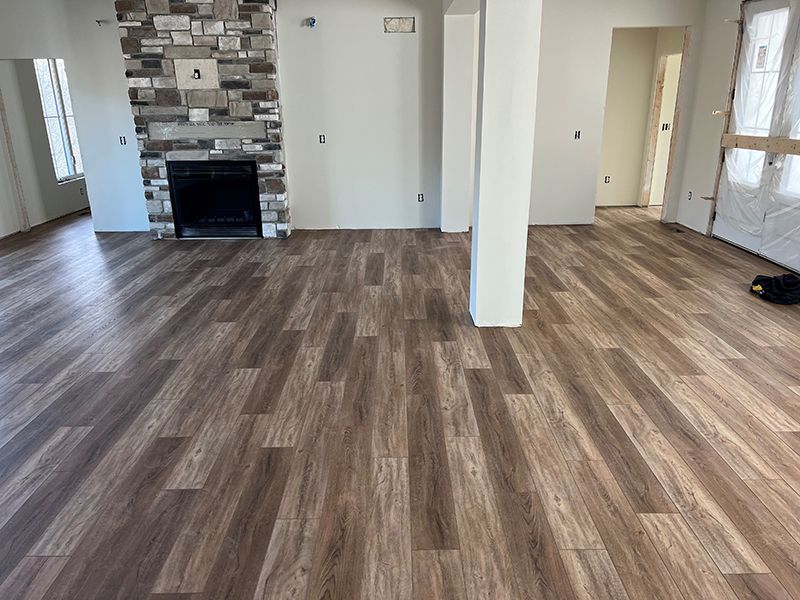Does Laminate Flooring Need Underlayment? Everything You Need to Know
When installing laminate flooring, many homeowners and contractors ask an important question: "Does laminate flooring need underlayment?" The answer depends on several factors, including the type of laminate, the subfloor condition, and the specific needs of your space. Underlayment plays a crucial role in laminate flooring installation, affecting everything from durability to comfort and even soundproofing.
In this guide, we’ll explore what underlayment is, when it’s required, its benefits, and how we choose the right type for your project.
What Is Underlayment?
Underlayment is a thin, cushioned layer that sits between the laminate flooring and the subfloor. It provides support, enhances performance, and helps address various issues such as moisture protection, sound absorption, and comfort.
Underlayment is made of different materials, including foam, cork, felt, and rubber. Some laminate flooring products even come with built-in underlayment, making installation simpler.
Does Laminate Flooring Always Need Underlayment?
While not every installation requires underlayment, it is highly recommended in most cases. Whether or not you need it depends on the type of subfloor and the specific laminate flooring product.
When Underlayment Is Required
- Concrete Subfloors - Concrete is prone to moisture, which can damage laminate flooring. A moisture-resistant underlayment is essential to prevent warping and mold growth.
- Plywood or OSB Subfloors - While wood subfloors are typically smoother than concrete, underlayment still provides cushioning, reduces noise, and enhances insulation.
- Floating Floor Installation - Since laminate flooring is typically installed as a floating floor (not glued or nailed down), underlayment helps stabilize the planks and prevents shifting or squeaking.
- Soundproofing Needs - Underlayment reduces noise transmission between floors in multi-level homes, making it a must-have for apartments and second-story installations.
When Underlayment May Not Be Necessary
- Pre-Attached Underlayment - Some laminate flooring products come with an integrated underlayment layer. Adding extra underlayment is unnecessary and may even void the warranty.
- Very Smooth and Dry Subfloors - If the subfloor is exceptionally level, dry, and made of a material that doesn’t require additional cushioning, you may be able to install laminate flooring without underlayment.
Benefits of Using Underlayment with Laminate Flooring
Even when underlayment isn’t strictly required, it can provide multiple benefits that enhance the longevity and comfort of your flooring.
- Moisture Protection: Underlayment with a moisture barrier helps prevent water damage, particularly in basements or areas with concrete subfloors.
- Sound Absorption: Laminate flooring can be noisy without underlayment. Sound-dampening underlayment reduces echo and impact noise.
- Increased Comfort: Underlayment adds cushioning, making laminate floors more comfortable to walk on.
- Improved Insulation: Certain underlayment materials provide thermal insulation, helping maintain indoor temperatures and reducing energy costs.
- Smoother Installation: Underlayment helps even out minor subfloor imperfections, creating a more uniform surface for laminate planks.
Types of Underlayment for Laminate Flooring
Choosing the right underlayment depends on your flooring needs, subfloor type, and budget. Here are the most common types:
Foam Underlayment
- The most common and affordable
- Provides cushioning and noise reduction
- Works well over plywood and OSB subfloors
Felt Underlayment
- Offers superior sound absorption
- Provides thermal insulation
- Good for multi-level homes
Cork Underlayment
- Naturally antimicrobial and eco-friendly
- Reduces sound and adds warmth
- Ideal for apartments and second floors
Rubber Underlayment
- Excellent for soundproofing
- Highly durable
- Often used in commercial spaces.
Moisture-Resistant Underlayment
- Essential for concrete subfloors
- Prevents mold and mildew growth
- Often comes with a built-in vapor barrier.
How to Choose the Right Underlayment
Consider the following factors when selecting the best underlayment for your laminate flooring:
Subfloor Type
- Concrete? Choose a moisture-resistant underlayment.
- Plywood? Foam or felt works well.
Room Location
- For basements, use a vapor barrier.
- For the second floor, choose soundproofing underlayment.
Laminate Flooring Type
- If your laminate has built-in underlayment, skip the additional layer.
Budget
- Foam is the most affordable, while cork and rubber are premium options.
Installation Tips for Underlayment
Proper installation ensures that your underlayment performs effectively. Here are some essential tips:
- Clean the Subfloor First: Remove dust, dirt, and debris before laying underlayment.
- Roll It Out in the Right Direction: Most underlayment should be installed perpendicular to the laminate planks.
- Tape the Seams: For moisture protection, use underlayment tape to seal seams.
- Trim Excess Material: Cut underlayment neatly to fit the room dimensions.
Final Verdict: Do You Need Underlayment?
Yes, in most cases, laminate flooring greatly benefits from underlayment. It provides moisture protection, enhances comfort, reduces noise, and ensures a smoother installation. The only exceptions are when your laminate has built-in underlayment or when the subfloor is already ideal for installation without an extra layer.
If you’re installing laminate flooring in your home, choosing the right underlayment can significantly affect the performance and lifespan of your floors. Cincy Preferred Flooring offers expert advice and professional installation services to ensure the best results.
Upgrade Your Flooring with Confidence
If you’re considering laminate flooring and want to know the best underlayment options for your space, Cincy Preferred Flooring is here to help. Contact us today for expert guidance and professional flooring installation in Cincinnati and the surrounding areas!



